News by date

by Nabiila Lubday
•
21 January 2025
The job market has seen significant shifts over the past four years, presenting both challenges and opportunities for professionals. From the uncertainty brought on by the COVID-19 pandemic in 2020 to the Great Resignation of 2021–2022, and now to an employer-driven marketplace, navigating your career has required adaptability and resilience. Today, with employers in a stronger position, competition among candidates is fierce, hiring processes are more rigorous, and compensation packages may be tighter. However, securing the right role in 2025 is entirely achievable with the right strategy. By focusing on these six actionable steps, you can position yourself as a standout candidate and take the next step in your career with confidence. 1. Adapt Your Approach to Today’s Job Market Success begins with understanding the current recruitment market and defining what you truly want from your next role. Clarify Your Career Goals : Don’t just move on from your current position—move forward. Take the time to define: What values and missions resonate with you? What responsibilities and growth opportunities are essential in your next role? How will this position align with your long-term career aspirations? Evaluate Employers Thoroughly : The right company will invest in your growth. When exploring opportunities, inquire about: Professional development and training programs. Mentorship opportunities. Recognition and rewards for contributions. Be Persistent and Strategic : Hiring processes may take longer in 2025, but staying consistent and following up regularly will demonstrate your commitment. Treat your job search as a full-time job with structure and focus. 2. Polish Your Personal Brand Your resume, LinkedIn profile, and cover letters are often your first introduction—make them count. Tailor Your Applications : Customize your resume for each role, emphasizing the skills and achievements most relevant to the position. Showcase Quantifiable Success : Use measurable results to illustrate your impact in past roles. Optimize for ATS Compatibility : Many companies use Applicant Tracking Systems (ATS), so ensure your documents are cleanly formatted and keyword-rich. Craft a Strong LinkedIn Profile : Highlight your career journey and unique strengths, ensuring your profile positions you as the ideal candidate. 3. Target Your Job Search for Maximum Impact A focused job search yields better results than casting a wide net. Prioritize New Listings : Apply to recently posted positions to increase your chances of being considered. Leverage Multiple Channels : Beyond job boards, explore company career pages, network connections, and professional groups. Think Broadly : Contract or temporary roles can help you build experience, broaden your skill set, and keep your resume current. 4. Ace Your Interviews Whether virtual or in-person, interviews are your opportunity to make a lasting impression. Do Your Homework : Research the company thoroughly and be ready to articulate how your skills align with the role. Use STAR for Behavioral Questions : Structure your answers around Situation, Task, Action, and Result for clarity and impact. Ask Insightful Questions : Show genuine curiosity about the company’s goals, culture, and opportunities for growth. 5. Harness the Power of Networking Networking remains one of the most effective ways to uncover opportunities and gain referrals. Strengthen Existing Relationships : Stay connected with your professional network, and don’t hesitate to reach out for guidance or introductions. Leverage LinkedIn : Engage with industry content, participate in discussions, and approach hiring managers with thoughtful, personalized messages. Attend Industry Events : Webinars, conferences, and networking events are excellent venues for building meaningful connections. 6. Invest in Skill Development Staying ahead in today’s job market requires continuous learning. Identify In-Demand Skills : Review job postings to pinpoint the skills employers are seeking and focus on areas where you can improve. Commit to Lifelong Learning : Online courses, certifications, and workshops are invaluable for staying competitive. Emphasize Transferable Skills : Communication, problem-solving, and adaptability are universally valued across roles and industries. Unlock Your Potential The 2025 job market may be competitive, but with preparation and persistence, success is within reach. By aligning your goals, optimizing your application materials, and leveraging your network, you can seize the opportunities ahead. If you’re ready to take the next step in your career, explore available vacancies or connect with professionals in your field for tailored advice. With dedication and a strategic approach, you can achieve your career aspirations.

by Wyn Brand
•
24 September 2024
The Future of Work: Balancing Innovation and Ethics in AI Integration The rapid evolution of AI presents organisations with a complex interplay of opportunities and challenges. Our recent webinar, "The Future of Work: The AI Debate," explored the ethical implications of AI integration and strategies for responsible implementation. Ethical Considerations at the Forefront As AI becomes increasingly embedded in business operations, ethical concerns have taken centre stage. Issues such as fairness, transparency, accountability, job displacement, and data privacy are paramount. To mitigate these risks, Sudhanshu Duggal, CIO of Digital and Business Transformation at Forbes Technology Council, highlighted several key points for organisations to consider: Data Quality: The data used to train AI models must be free from biases related to gender, race, and other demographics. Poor data quality can lead to biased outcomes, particularly in sensitive areas like recruiting and talent acquisition. AI Model Transparency: Companies not using established public models must ensure their AI models are fair and ethical. Transparency about the model's workings is crucial to avoid incorrect results and actions. Compliance with Governance Models: The platforms implementing AI should comply with local privacy laws and governance standards. Ensuring transparency with end-users, whether they are consumers or employees, is essential. Duggal recommended investing in a robust data infrastructure, such as data lakes and platforms from AWS, Microsoft, or Google, which are already vetted. He also emphasised the importance of creating new roles to manage AI ethically, such as model risk officers and AI engineers. Implementing comprehensive governance policies and conducting regular audits are critical to preventing misuse and ensuring responsible AI deployment. AI as a Catalyst for Diversity and Inclusion While AI has the potential to perpetuate existing biases, it can also be a powerful tool for promoting diversity and inclusion. Shankar Nagalingam, VP of Human Resources at Lumileds, acknowledged concerns about AI-induced bias but argued that AI could reduce bias through mechanisms like blind sourcing. AI can scan job boards globally without prejudice, focusing solely on job descriptions, capabilities, and required skill sets. This approach can increase diversity by providing rationalised insights into top candidates based on specific requirements. Nagalingam highlighted how organisations are already leveraging AI to enhance diversity, including increasing the representation of women in leadership roles. AI’s ability to streamline the initial sourcing process allows recruiters to focus on understanding organisational needs and critical thinking, thus improving the overall hiring process. While AI offers significant potential, it's essential to recognise the continued importance of human skills. As Nagalingam emphasised, roles will evolve, and new job opportunities will emerge. Upskilling and reskilling programmes should focus on developing skills that complement AI, such as critical thinking, problem-solving, and emotional intelligence. Upskilling the Workforce for the AI Era To fully harness the potential of AI, organisations must invest in upskilling their workforce. This involves developing a culture of continuous learning, providing employees with the necessary skills to work effectively with AI, and fostering a mindset of adaptability. By equipping employees with the tools and knowledge to thrive in an AI-driven world, organisations can unlock new opportunities and maintain a competitive edge. Conclusion The successful integration of AI requires a balance between innovation and responsibility. By addressing ethical concerns, investing in employee development, and leveraging AI as a tool for good, organisations can navigate the complexities of the AI landscape and create a future where humans and machines work together harmoniously. To gain deeper insights and practical strategies on these topics, watch the full webinar recording.

6 August 2024
The Future of Work: How AI is Reshaping the Workplace As AI continues to evolve, its impact on various sectors becomes more evident. From reshaping job roles to integrating into business processes, AI presents both challenges and opportunities. This article explores these transformations, drawing insights from our recent webinar "The Future of Work: The AI Debate", industry experts shed light on the complex relationship between AI and the future of work. AI's Impact on Job Roles: Reskilling for the New Landscape Shankar Nagalingam, VP of Human Resources at Lumileds, presents a thought-provoking statistic from the World Economic Forum. Their study predicts that AI will displace 85 million jobs globally by 2025. However, the outlook isn't entirely bleak. The same study suggests the emergence of 97 million new roles in the AI era. For example, emerging roles such as AI and machine learning specialists, data scientists, data analysts, robotic engineers, and digital transformation specialists. These roles will be in high demand across various fields, including HR, finance, and IT. This underscores a critical point: AI isn't simply a job-killer; it's a catalyst for job creation, albeit in different fields. To thrive in this evolving landscape, workers will need to develop new skill sets. Jobs most susceptible to automation involve repetitive tasks, data entry, and specific analytical functions. Sectors like HR, finance, and manufacturing are prime examples. However, the human element remains irreplaceable as Nagalingam points out, essential soft skills like critical thinking, emotional intelligence, and creativity, will become even more crucial. Equipping the Workforce for the Future: Upskilling and Reskilling “The future belongs to those who can adapt." This statement was mentioned by Elle Green, Head of Partnerships & Growth at Become Recruitment Australia, who further emphasizes the critical need for upskilling and reskilling the workforce. "The demand for digital and technological skills will soar," she says, alongside the continued importance of soft skills. This necessitates a two-pronged approach: individuals must take ownership of their professional development, and organizations must invest in training programs that equip employees with the skills needed to thrive in the AI landscape. A Strategic Approach to AI Integration: Businesses Must Start Smart The potential benefits of AI for businesses are vast, from increased efficiency and productivity to improved customer service and product development. However, Green warns against a ‘boil the ocean’ approach. Businesses must be strategic. Here, Green offers valuable advice, "Start small. Identify time-consuming tasks that AI can replace or augment. Look at current workflows to find areas ripe for efficiency gains through AI." Green also highlights the importance of data quality, "Ensuring data quality is crucial, especially with multiple HR systems often not communicating effectively. Before integrating AI, evaluate and improve your data quality. Additionally, fostering a culture of AI adoption within the organization is key. This requires clear communication to address employee fears and varying levels of capability, along with adequate training.” Incremental implementation, clear communication, and proper training are Green's key takeaways. Identifying early adopters within the organization and ensuring they're well-equipped to use AI is crucial. HR and marketing are likely to be the fastest adopters and could greatly benefit from AI. Beyond the Technology: Fostering a Culture of AI Adoption While technology is crucial, Sudhanshu Duggal, CIO of Digital and Business Transformation at Forbes Technology Council, reminds us that AI is ultimately a tool. Duggal offers valuable advice for businesses new to AI: "Clearly define the business problem you want to solve. Align with your leadership on the biggest problems AI can impact. Remember, technology is a means to an end, so get the fundamentals right. Establish a clear data strategy and experiment with proof-of-concepts." Duggal advocates for the "10-20-70 rule": start with experiments (10%), scale successful ones (20%), and then maximize and realize value (70%). This involves reimagining your business, creating new processes, and ultimately transforming your organization. Fostering a learning culture and partnering with HR and other functions can significantly accelerate adoption and business impact for digital transformation initiatives. Conclusion AI is poised to transform industries, presenting both challenges and opportunities. While there are concerns about job displacement, the emergence of new roles highlights the potential for growth and transformation. For organizations, the key lies in incremental implementation, ensuring data quality, and fostering a culture of AI adoption. By aligning with leadership and focusing on clear business problems, businesses can harness the full potential of AI, transforming operations and driving future growth. To delve deeper into the specific strategies and practical considerations for navigating AI at work, watch the full webinar here: The Future of Work: The AI-Debate




